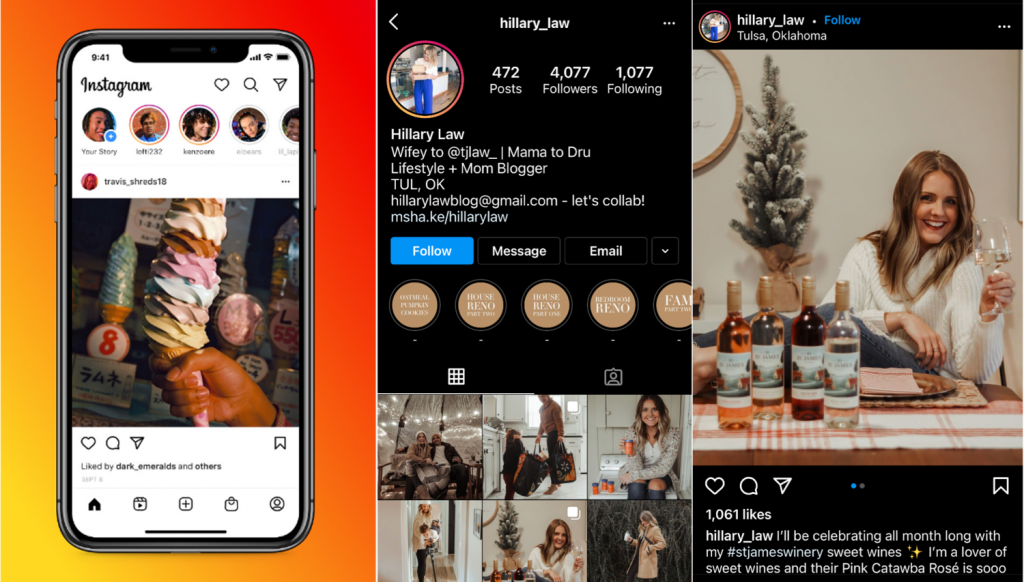It has been a long, unprecedented year, and people have been turning to social media more than ever to connect with their loved ones in the face of the pandemic which has kept us at home and away from each other. In the past year or so, there was a 10.5% increase in the total number of social media users throughout the world, which now makes up more than half of the entire world population! It has even been reported that there are 12 new users on social media every second. All things considered, it only makes sense that a bunch of social media trends have risen and grown in popularity these past 12 months!
That being said, many trends come and go – so which of these trends are here to stay?
1. Livestreaming
The livestreaming industry has grown massively over the past year, seeing a 99% increase between April 2019 and April 2020. People even consume live content for a duration that is 10-20 times longer than the usual amount of time they would spend viewing on-demand videos. Facebook Live, in particular, was the most preferred platform for livestream viewing. 78% of people using the internet are viewers of Facebook Live content, which they spend three times more time viewing compared to usual videos.
Livestreaming was a necessity in the face of the pandemic, as businesses needed to find ways to connect with their customers on a virtual, but more engaging basis. An example would be Joy, a wedding planning service that introduced planning services for virtual weddings specifically. This service was a welcome one, what with regular, in-person weddings becoming a total no-no thanks to COVID-19. This being said, the question remains if such services will still be in use in the future, regardless of how long the pandemic’s effects last.
Luckily for us, Joy conducted a survey to answer this question and found that a whopping 64% of couples would be willing to incorporate a livestream element to their weddings in the future – proving that hybrid models of these services will be a thing in time to come! All in all, livestreaming has made life easier for many people, and it’s clearly here to stay in one way or the other.

2. Social Commerce
Social commerce has become increasingly popular the more we all engage in social media and its services. You’ve probably come across some form of social commerce any time you’ve gone on to your social media pages. Some examples you might have seen are Facebook Marketplace listings or shoppable posts on Instagram. Speaking of shoppable posts on Instagram, it’s no secret that the platform has taken a much bigger step in the direction of social commerce, replacing the usual “Activity” tab with a “Shop” tab instead, and moving the former tab to the top of the screen. This only goes to show how social commerce is growing in popularity on a large scale, and how brands have been adapting to fit this development.
Social commerce is also often merged with livestreaming nowadays, as sellers taking to Facebook Live Shopping to sell their products in a more engaging manner. They are able to demonstrate the use of an item, respond to questions from the audience immediately, and much more, creating a more effective exchange between buyers and sellers. The Facebook feature also allows sellers to select links and products that they would like to promote to customers on the live, offering an added level of convenience and accessibility which everyone can get behind.
The truth is, social commerce has been on the up and up for several years now. Three years ago, only 17% of retailers were making use of social commerce. The following year, however, this number had grown significantly to 33%. Now, in 2020, sales for products that are bought through social commerce are projected to reach $23.3 billion, a 20% increase from 2019. With the ease and accessibility of social commerce, not to mention how social platforms can tailor ads to users’ interests, there is no doubt that social commerce will continue to rise in popularity in the years to come! We also did a blog on social commerce a while back – check it out here to learn more.

3. Nano-influencer Marketing
Influencer marketing has been around for a while now. However, with time, the way that audiences receive and respond to influencers has changed, with many users seeking genuineness and sincerity from the influencers and brands they follow. On that note, the way that brands approach their influencer marketing efforts also has to change! It’s no longer just about working with influencers who have large, general followings. The simple act of going after likes is not going to get your brand the engagement and connections that it is after. That’s why many brands are now making use of nano-influencer marketing!
Engaging with influencers that have more genuine connections with their audience, even if they have fewer followers, will ensure that your brand is speaking to people on a more targeted and real level. 69% of marketing professionals have admitted that nano influencers have increased their brand’s consumer engagement! Engagement rates for nano influencers are also greater because nano influencers often put out content that is more niche. Not to mention, working with nano-influencers is also wallet-friendly as they usually charge less for posts than established mega influencers, meaning that you gain more for less! Clearly, nano influencers are the people to turn to in this day and age. As users shift their focus to seeking deeper connections with influencers and brands, these smaller influencers are undoubtedly here to stay and bridge that gap. If you’d like to know more about influencer marketing and the different tiers of influencers that exist, check this post out!
4. Stories and Ephemeral Content
Stories started with Snapchat, but you can find them on nearly every social media platform today! (Check out our blogpost on the rise and fall of Snapchat here!) 500 million users use Instagram and Facebook Stories every single day. If that’s not impressive, we don’t know what is! It’s also worth noting that 62% of users find themselves more interested in a brand upon viewing it in an Instagram Story post. This type of content is considered ephemeral content – basically referring to content that lasts for a short time – and it’s here to stay. With the way our world has progressed, people have shorter attention spans and look for easy-to-digest content that they can consume quickly before moving on to the next thing. Ephemeral content fits the bill for this completely with how easy it is to view stories, and how the nature of many of these platforms automatically takes users through Story after Story for their uninterrupted viewing pleasure.
Stories have also changed the game with just how interactive their features are. With polls, questions, and quizzes all at your fingertips, your brand has no excuse to not engage with its audience when making use of ephemeral content! It’s such an easy way to start conversations with your audience and get them more involved in your brand.
As Stories and ephemeral content continue to rise in popularity, it’s clear that this trend isn’t about to go anywhere – so if you haven’t jumped on it yet, you should definitely get around to doing it soon!

5. Augmented Reality (AR)
If you use Instagram or Snapchat stories, surely you would have come across an AR filter or two! Whether it’s puppy ears on your head or wings on your back, AR filters are all the rage when it comes to taking ephemeral content and more to the next level. It’s a whole other level of immersion that functions as an experience for users.
Take Sephora for example. The brand released an AR filter on Facebook Messenger that allows users to “try on” makeup products and see how they look on them without having to go down to Sephora stores to physically do so. This enhances the customer experience and guides customers towards making quality purchases as well!
AR has been around for a significant amount of time, particularly rising in popularity with the growth of Snapchat back in the day, when everyone was using the flower crown and puppy or cat filter. With that in mind, and seeing how AR has only grown in popularity and capability since then, it’s no question that this trend is sticking around.

Social media trends can be fleeting, but some do prove to be pretty tough in the face of time. It’s been a long year, and as we look toward the future, it’s worth thinking about what we’d like to bring along with us in the time to come.
These trends are worth taking along for the ride. When used effectively, they can all bring your brand to new heights, forming deeper relations with your consumers in a very engaging manner. A lot can change over time, but one thing that remains the same, and which these trends can help you fulfil, is our need for meaningful interactions as human beings, even with brands. After all, it is called social media for a reason!
— —
Hero image: cottonbro, Pexels
